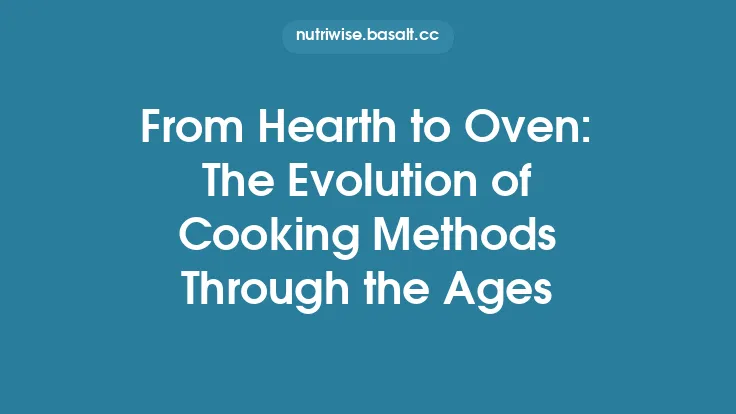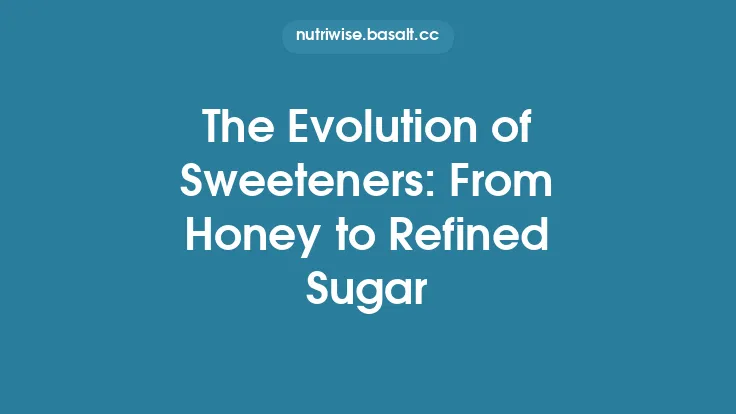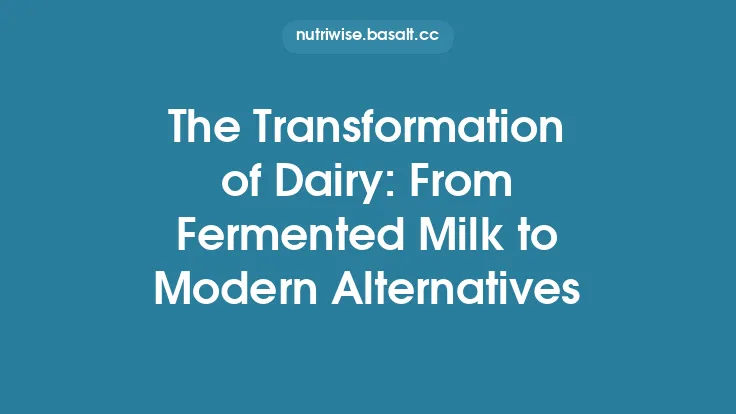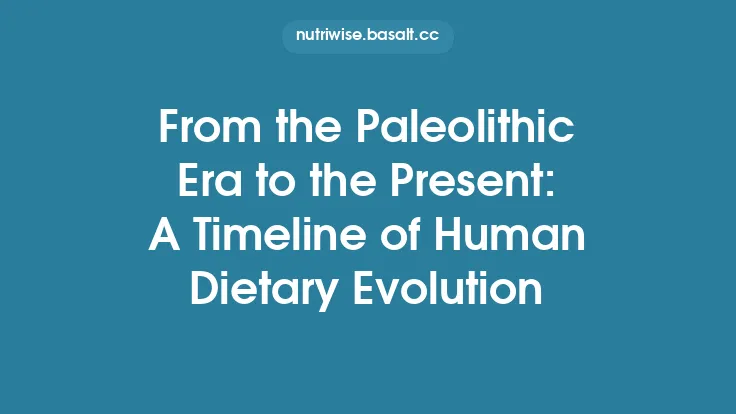The way we encounter food—what it looks like, how it sounds, and the stories that surround it—has been reshaped repeatedly over the past century. From the crisp ink of newspaper ads to the rapid scroll of TikTok videos, each medium has introduced new tactics, altered the nutritional landscape of marketed products, and left lasting imprints on consumer behavior. Understanding this evolution is essential for anyone trying to separate timeless nutritional truths from the fleeting allure of advertising trends.
From Print to Broadcast: Early Foundations
Print media laid the groundwork for food advertising in the late 19th and early 20th centuries. Newspapers and magazines offered a static yet powerful canvas for brands to showcase product images, price points, and health claims. Early copywriters relied heavily on plain‑language health assertions—“good for the family,” “strengthens the body”—because scientific nutrition was still nascent and regulatory oversight minimal.
Key characteristics of the print era:
| Feature | Description |
|---|---|
| Visual Simplicity | Black‑and‑white line drawings or early color lithographs emphasized product shape and packaging. |
| Copy Length | Long, persuasive paragraphs that could occupy an entire column, often citing “doctors” or “experts” without verification. |
| Targeting | Broad, geographically defined readerships; limited ability to segment by age, income, or health status. |
| Nutritional Impact | Products were marketed primarily on taste and convenience; nutritional content was rarely disclosed, allowing high‑sugar, high‑fat items to dominate shelf space. |
The limited feedback loop—readers could not instantly respond—meant that advertisers relied on sales data and circulation numbers to gauge success, rather than direct consumer sentiment.
The Rise of Television and the Birth of the Food Commercial
The 1950s ushered in television, turning food advertising into an audiovisual experience. The medium’s ability to combine moving images, sound, and narrative opened doors to emotional storytelling. Brands could now depict families gathering around a dinner table, children laughing with a new snack, or a glamorous host preparing a “quick and healthy” meal.
Notable shifts included:
- Jingles and Slogans: Catchy melodies reinforced brand recall, often embedding health‑related promises (“low‑fat,” “fortified with vitamins”) into the earworm.
- Product Placement: Shows began integrating real products into storylines, subtly influencing viewers without a traditional commercial break.
- Time‑Slot Targeting: Morning cartoons attracted children, while daytime soap operas reached homemakers, allowing advertisers to tailor nutritional messaging (e.g., “kid‑friendly cereals” vs. “light lunch options”).
Regulatory bodies, such as the U.S. Federal Trade Commission (FTC) and the Food and Drug Administration (FDA), started to scrutinize unsubstantiated health claims, leading to the first formal guidelines on nutrient content claims (e.g., “low‑calorie,” “high‑fiber”). However, the visual allure often outweighed the textual fine print, and many consumers still perceived advertised foods as inherently healthier than they were.
Cable, Satellite, and the Proliferation of Niche Channels
By the 1980s and 1990s, cable and satellite television fragmented audiences into niche channels—sports, cooking, lifestyle, and children’s programming. This segmentation allowed advertisers to align products with specific interests:
- Cooking Channels: Brands showcased “premium” ingredients and “gourmet” ready‑meals, positioning them as sophisticated yet convenient.
- Sports Networks: Energy drinks and protein bars were marketed as performance enhancers, often using physiological language (“replenish electrolytes,” “support muscle recovery”).
The increased granularity of audience data led to more precise nutrient framing. For instance, a cereal advertised on a children’s network might highlight “whole grain” and “vitamin D” while downplaying sugar content, whereas the same product on a general audience channel could emphasize “family‑size value.”
Simultaneously, nutrient profiling systems—such as the UK’s Nutrient Profiling Model—began to inform advertising standards, encouraging broadcasters to limit the promotion of foods high in saturated fat, sugar, or salt during children’s programming.
The Digital Turn: Websites, Banner Ads, and Early Social Platforms
The late 1990s and early 2000s marked the migration of food advertising to the internet. Brands launched dedicated websites that offered:
- Interactive Nutrient Calculators: Allowing users to input serving sizes and see macro‑ and micronutrient breakdowns.
- Recipe Libraries: Positioning processed foods as versatile ingredients for “home‑cooked” meals.
Banner ads introduced click‑through metrics, providing advertisers with immediate feedback on engagement. Early social platforms (e.g., MySpace, early Facebook) enabled user‑generated content, where fans could share brand‑related photos and testimonials, subtly blurring the line between advertising and peer endorsement.
From a nutritional standpoint, this era saw the rise of “fortified” claims—adding vitamins, minerals, or fiber to processed foods and promoting them as “better choices.” While fortification can address specific micronutrient deficiencies, it also allowed manufacturers to mask high levels of added sugars or sodium behind a veneer of added health benefits.
Short‑Form Video and TikTok: A New Advertising Frontier
TikTok, launched globally in 2017, epitomizes the latest shift toward short‑form, algorithm‑driven video content. Its unique features—vertical format, 15‑ to 60‑second clips, and a powerful recommendation engine—have transformed food advertising in several ways:
- Rapid Sensory Appeal
- Visual Hooks: Quick cuts of sizzling, melting, or colorful foods trigger immediate cravings.
- Audio Cues: Trending sounds or music synchronize with food preparation, creating a multisensory stimulus that can influence perceived taste and satisfaction.
- Micro‑Narratives
- Brands craft “story arcs” within seconds—unboxing a snack, a bite reaction, a brief health tip—leveraging the platform’s “loop” nature to reinforce the message through repetition.
- Algorithmic Targeting
- The recommendation system uses engagement signals (likes, watch time, comments) to serve food content to users who have previously interacted with similar videos, effectively creating a personalized advertising feed without explicit demographic targeting.
- Embedded Nutritional Claims
- Short captions or on‑screen text often highlight a single nutrient (“+20 g protein”) or a health angle (“low‑carb”). Because the format limits depth, these claims can be oversimplified, leading viewers to infer broader health benefits than warranted.
- User‑Generated “Branded Challenges”
- Brands sponsor challenges (e.g., “#SnackSwap”) encouraging users to replace a traditional snack with a marketed alternative. While participatory, these challenges can normalize consumption patterns that may not align with dietary guidelines.
The brevity and virality of TikTok content mean that nutritional information is often conveyed through impression rather than analysis, making it crucial for consumers to seek out full ingredient lists and nutrition facts beyond the video.
Nutritional Implications of Advertising Evolution
The transition across media has not only altered how food is presented but also how its nutritional composition has been engineered:
- Formulation Driven by Visual Appeal
- Bright colors, glossy textures, and “mouth‑watering” sounds have prompted manufacturers to increase sugar, salt, and fat to achieve the desired sensory profile, especially for products showcased in high‑definition video.
- Fortification as a Marketing Tool
- Adding vitamins or fiber can create a “health halo,” allowing otherwise energy‑dense foods to be marketed as “nutrient‑rich.” Studies have shown that consumers often overestimate the overall healthfulness of fortified items, neglecting other adverse components.
- Portion Size Inflation
- Advertising that emphasizes “family packs” or “shareable” formats encourages larger portion consumption. Visual cues—such as a bowl overflowing with cereal—can recalibrate perceived normal serving sizes.
- Macronutrient Emphasis Shifts
- Early print ads rarely mentioned macronutrients. Television introduced “low‑fat” and “high‑protein” claims. Digital platforms now spotlight “keto‑friendly” or “plant‑based” attributes, each influencing product reformulation to meet the highlighted nutrient profile.
- Temporal Consumption Patterns
- Snack‑focused advertising on fast‑moving platforms promotes frequent, small‑portion eating, which can disrupt traditional meal structures and affect overall energy balance.
Collectively, these trends have contributed to a nutrient profile drift in the processed food supply: higher added sugars, refined carbohydrates, and sodium, coupled with selective fortification. While some innovations (e.g., reduced trans‑fat formulations) have improved public health outcomes, the net effect remains mixed.
Regulatory Responses and Nutrient Profiling Systems
Governments and health organizations have responded to the evolving advertising landscape with a suite of policies aimed at protecting consumers:
- Front‑of‑Package (FOP) Labeling
- Systems such as the Nutri‑Score (France) and Health Star Rating (Australia) provide at‑a‑glance nutrient assessments, counterbalancing health‑halo claims in ads.
- Advertising Restrictions for Children
- Many jurisdictions prohibit the promotion of foods high in sugar, salt, or saturated fat during programming aimed at children under a certain age, extending to digital platforms where feasible.
- Mandatory Disclosure of Added Sugars
- Recent updates to nutrition facts panels require explicit listing of added sugars, making it harder for advertisers to hide high sugar content behind vague “sweetened” descriptors.
- Nutrient Profiling Thresholds for Claims
- To use terms like “low‑fat” or “high‑fiber,” products must meet defined quantitative thresholds, limiting the ability to make misleading health claims.
These regulatory tools aim to align marketing messages with objective nutritional data, though enforcement varies across media types, especially on rapidly evolving platforms like TikTok.
Formulation Strategies Driven by Advertising
Food manufacturers often adjust product recipes to satisfy both consumer expectations shaped by advertising and regulatory constraints:
- Sugar Substitution
- To maintain sweetness while meeting “low‑sugar” claims, manufacturers employ high‑intensity sweeteners (e.g., sucralose, stevia). While calorically advantageous, these substitutes can affect satiety signals and gut microbiota.
- Fat Re‑Engineering
- “Low‑fat” claims have led to the use of structured lipids and emulsifiers that mimic mouthfeel without the caloric load, yet may influence lipid metabolism differently than traditional fats.
- Protein Enrichment
- The rise of “high‑protein” marketing, especially on platforms emphasizing fitness, has spurred the addition of whey, soy, or pea protein isolates, altering amino acid profiles and potentially affecting digestibility.
- Fiber Fortification
- To support “high‑fiber” claims, soluble fibers (inulin, oat β‑glucan) are incorporated, which can improve texture and shelf life but also cause gastrointestinal discomfort in sensitive individuals.
- Flavor Amplification
- Umami enhancers (e.g., monosodium glutamate) and flavor‑burst technologies are used to compensate for reduced salt or fat, ensuring the product remains palatable in the context of health‑focused advertising.
Understanding these formulation tactics helps nutrition professionals assess whether a product’s advertised benefits translate into genuine health improvements.
Public Health Perspectives and Data Trends
Epidemiological data reveal a complex relationship between advertising evolution and population nutrition:
- Increased Energy Intake from Processed Snacks
- National surveys in multiple countries show a steady rise in calories derived from “convenience” foods, coinciding with the expansion of short‑form video advertising.
- Mixed Impact of Fortification
- While fortification has reduced deficiencies in iron and vitamin D in some demographics, the concurrent rise in added sugars and sodium in fortified products has mitigated overall health gains.
- Shifts in Dietary Patterns
- The prominence of “plant‑based” and “keto” narratives on digital platforms correlates with modest increases in legume and nut consumption, yet also with higher intake of processed meat analogues that may contain high sodium levels.
- Youth Exposure
- Studies tracking screen time indicate that adolescents spend an average of 3–4 hours daily on platforms like TikTok, with a significant portion of that exposure dedicated to food‑related content, influencing snack preferences and portion norms.
These trends underscore the need for continuous monitoring of advertising content, nutrient composition, and consumption outcomes to inform policy and public health interventions.
Future Directions: Emerging Technologies and Ethical Considerations
Looking ahead, several technological and ethical developments will shape the next chapter of food advertising:
- Artificial Intelligence‑Generated Content
- AI can produce hyper‑personalized video ads at scale, tailoring nutrient claims to individual health data (e.g., wearable‑derived glucose trends). While potentially beneficial, it raises concerns about data privacy and algorithmic bias.
- Augmented Reality (AR) Shopping Experiences
- Brands are experimenting with AR overlays that display nutrition facts when a consumer points a smartphone at a product. This could enhance transparency but also be used to highlight selective nutrients while downplaying others.
- Blockchain‑Based Ingredient Traceability
- Transparent supply‑chain data could be integrated into ads, allowing consumers to verify sourcing and processing methods, potentially shifting focus from superficial health claims to holistic sustainability metrics.
- Ethical Advertising Frameworks
- Industry groups are beginning to draft voluntary codes that limit the promotion of ultra‑processed foods to vulnerable populations, emphasizing responsible messaging over pure sales objectives.
- Consumer Education Integration
- Embedding brief, evidence‑based nutrition education snippets within ads (e.g., “Did you know? A serving of this cereal provides 15 % of your daily fiber”) could help counteract the “health halo” effect, provided the information is accurate and not misleading.
The convergence of these innovations offers an opportunity to recalibrate the relationship between food advertising and nutrition, moving from a purely persuasive model toward one that supports informed, health‑conscious decision‑making.
In sum, the journey from printed flyers to TikTok clips reflects more than a change in media—it mirrors the evolving strategies of food manufacturers, the shifting regulatory landscape, and the complex ways in which visual and auditory cues influence our perception of nutrition. By dissecting each stage of this evolution, we gain a clearer, evergreen understanding of how advertising shapes the nutrient profile of the foods we encounter and, ultimately, the health of the populations that consume them.





